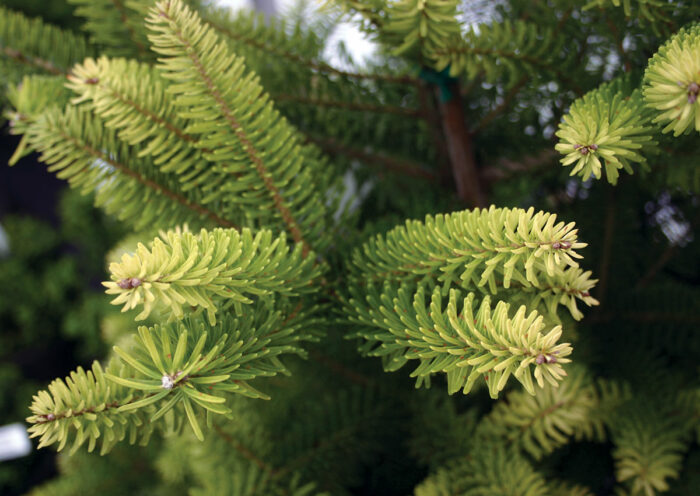
Conifers have come a long way over the last few decades, giving gardeners an astonishing variety of sizes, shapes, and textures to work with, as well as a seemingly endless color palette. Their maintenance-free attributes make them especially appealing for landscapes of all sizes, from backyard beds to large-scale designs. Some conifers even outshine their traditional floral companions and take center stage, offering an undeniable wow factor 365 days a year. Adding just a few colorful conifers takes a design to the next level, providing structure, contrast, and complimentary textures to existing plantings. The following are some intriguing favorites and exciting new selections that would be perfect for giving your garden a burst of reliable, long-lasting color.
For a tidy pyramid of frosty color, plant ‘Baby Blue Ice’ Sawara cypress
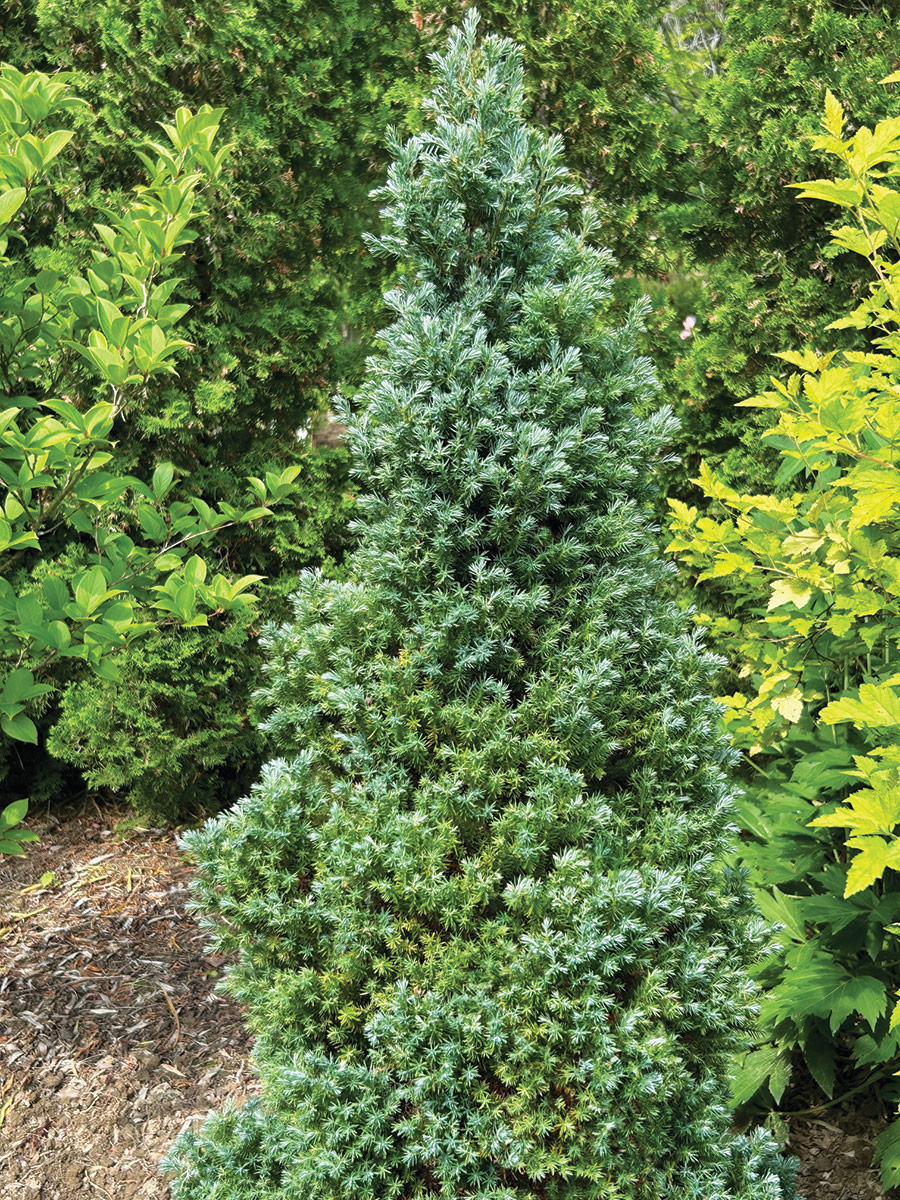
Name: Chamaecyparis pisifera ‘Baby Blue Ice’
Zones: 5–8
Size at 10 years: 36 inches tall and 30 inches wide
Annual growth rate: 3 to 4 inches
Conditions: Full sun to partial shade; well-drained soil
Native range: Japan
Slow-growing, conical ‘Baby Blue Ice’ has finely textured, bright blue foliage with silver undertones and requires almost no pruning. Found as a mutation in 1998 from ‘Baby Blue’, this more deeply colored cultivar is often globe-shaped in youth, but before long it will develop a leader and start putting on about four inches of growth per year. This variety, like the species, has trouble shedding its older needles, so it’s important to clean out the older foliage every couple of years. Surround it with crocosmia (Crocosmia spp. and cvs., Zones 6–9) or other hot-colored plants for a particularly pleasing effect. In the northern part of its range it can burn in late winter; siting it in a spot with morning sun and afternoon shade will yield the best results.
Planting tip: Let the sun dictate siting
Conifers with golden or blue foliage generally need at least half a day of sun (four to six hours) to stay yellow or blue. In shadier conditions, yellows tend to mellow into limes and blues become more greenish.
‘Ruby Teardrops’ Colorado spruce holds its colorful cones for several weeks
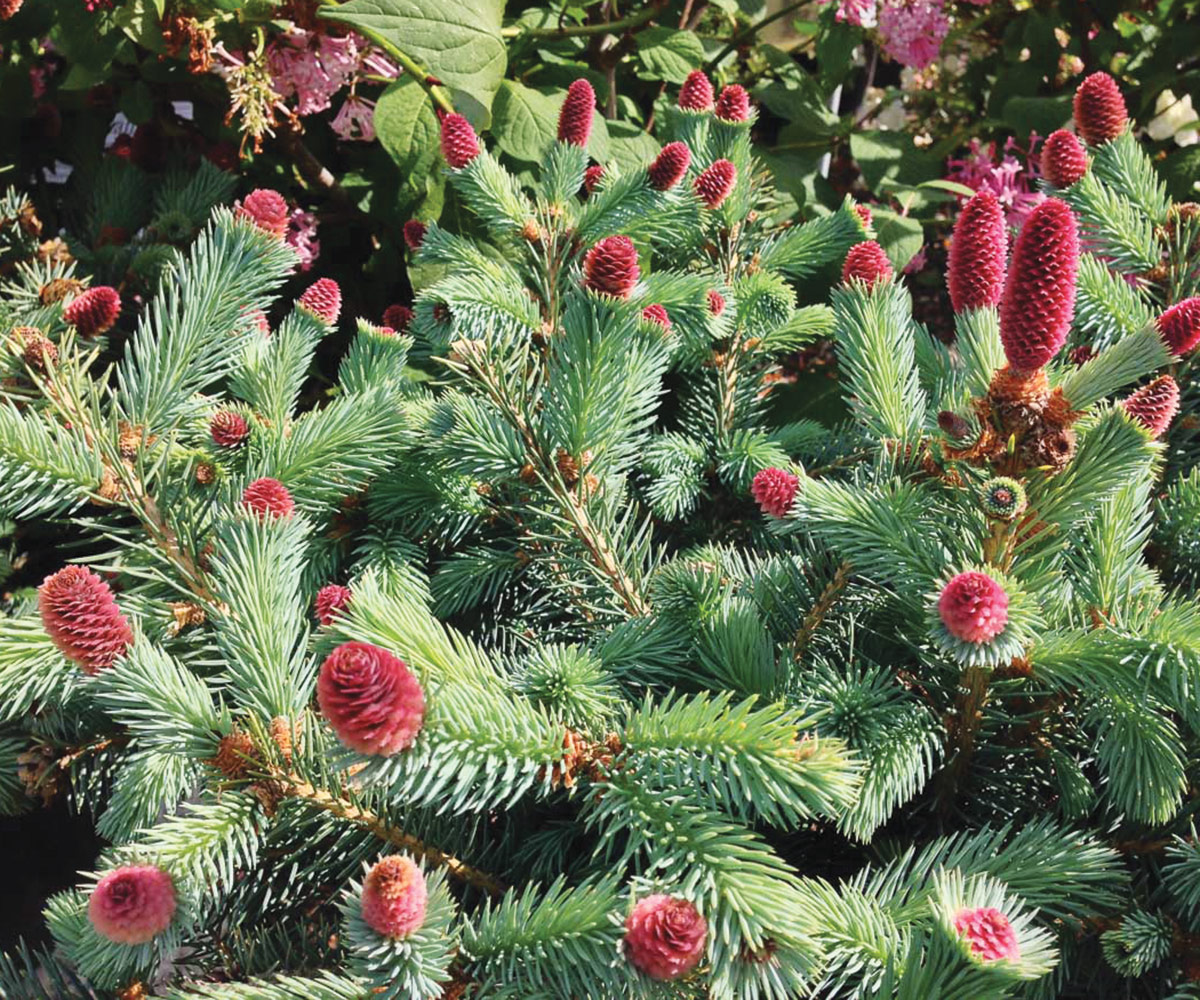
Name: Picea pungens ‘Ruby Teardrops’
Zones: 3–7
Size at 10 years: 3 to 4 feet tall and wide
Annual growth rate: 4 inches
Conditions: Full sun; well-drained soil
Native range: Central and southern Rocky Mountains
Interesting color doesn’t always have to come from flowers or foliage. ‘Ruby Teardrops’ exhibits a unique feature, with fuchsia red cones adorning the tips of its powdery blue branches like Christmas lights each spring. This glorious anomaly of color lasts for about six weeks before the cones take on a more traditional tawny tone. In my experience, ‘Ruby Teardrops’ will maintain a globe-shaped form without developing a leader. For best effect, place it prominently in a bed where it can be seen easily from a distance as well as up close. If you can’t find ‘Ruby Teardrops’, another very similar Colorado spruce cultivar is ‘Hermann Naue’.
‘Morgan’ arborvitae performs seasonal color changes with style
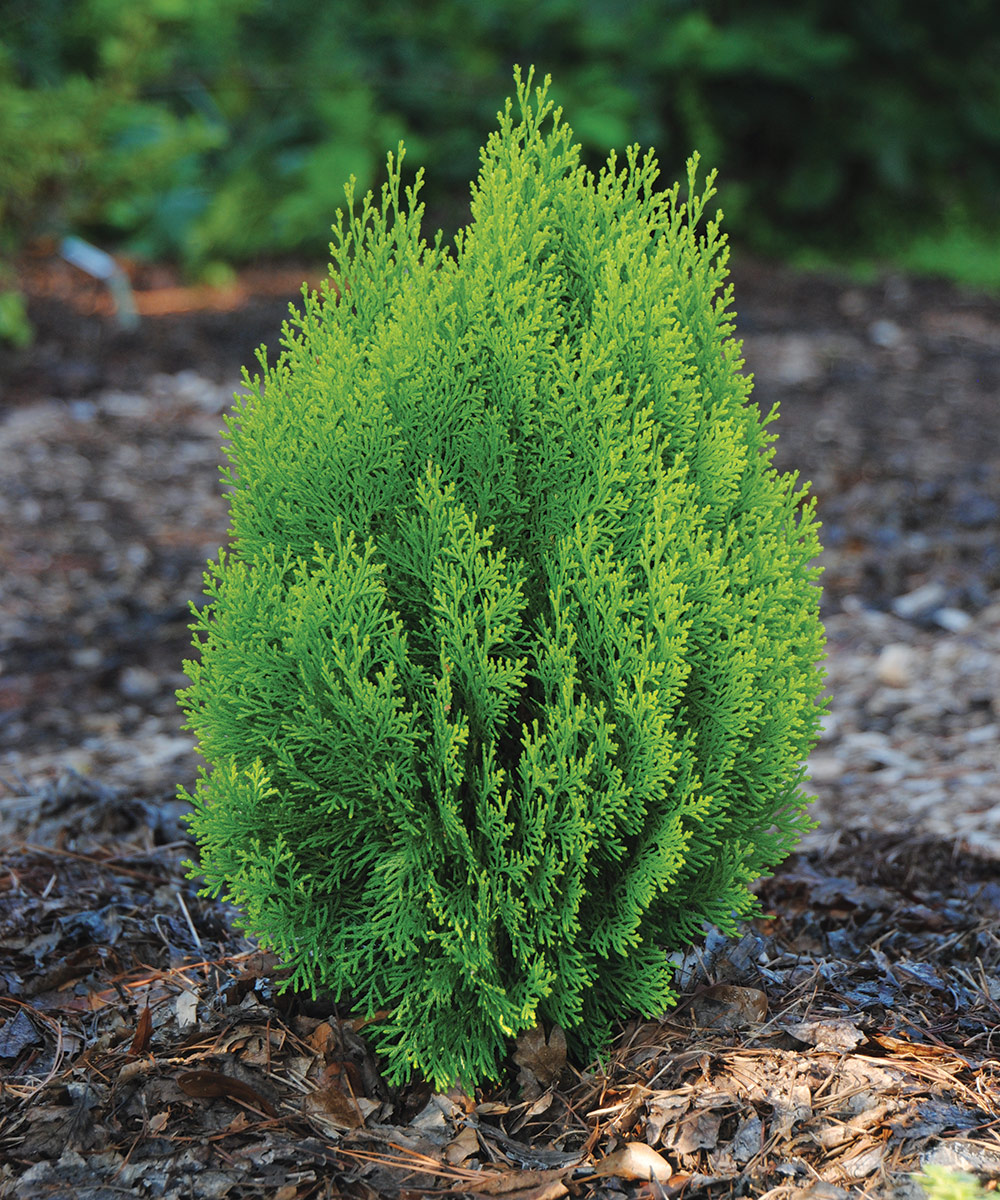
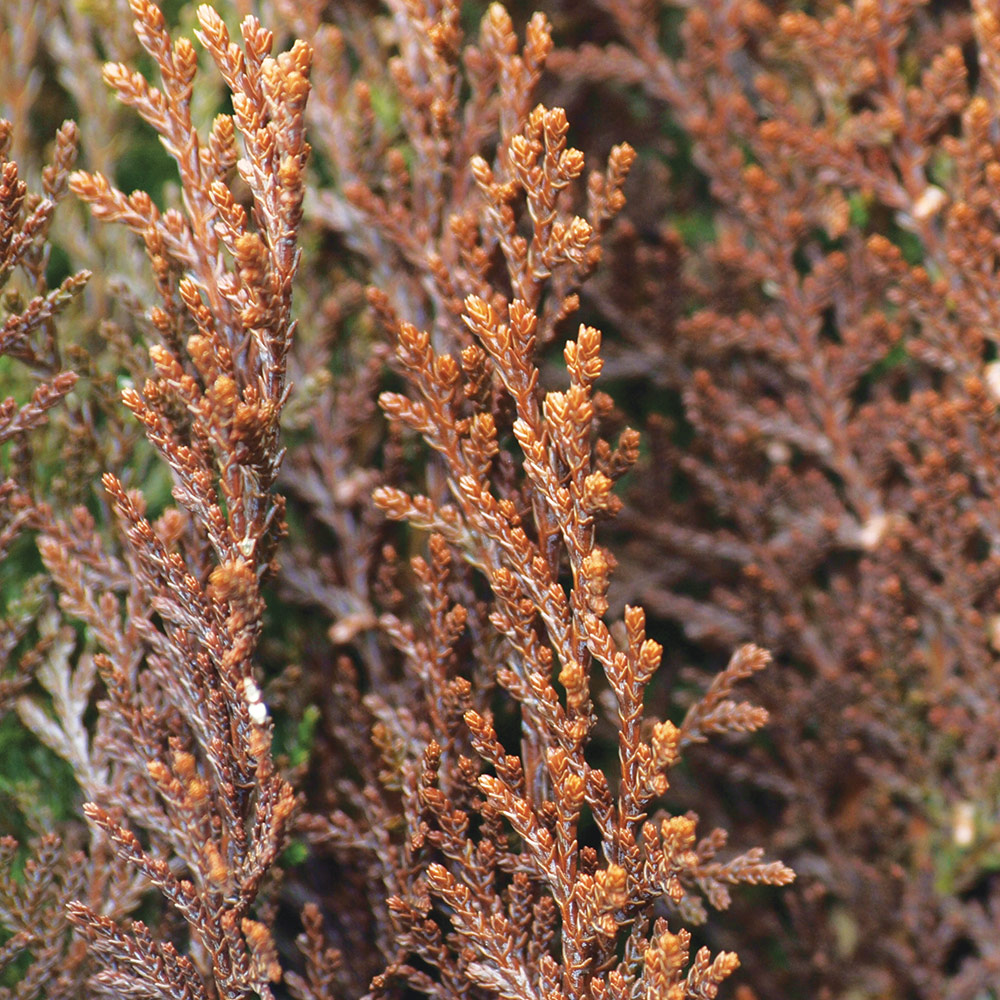
Name: Thuja (syn. Platycladus) orientalis ‘Morgan’
Zones: 5–8
Size at 10 years: 4 feet tall and 3 feet wide
Annual growth rate: 3 to 4 inches
Conditions: Full sun to partial shade; well-drained soil
Native range: Eastern Asia
In spring and summer, this egg-shaped cutie shows off its bright yellows and lime greens on upright fans of foliage. In fall it takes on tints of purple and bronze before shifting to its unique winter color, a deep orange that borders on burgundy. ‘Morgan’ is perfect for small gardens with limited space, and its slow growth rate makes it a good fit for a container planting. It rarely needs pruning to keep its shape. You can even use it in geometric designs, where it has a nice formal look. Another plus with this variety is its heat tolerance in southern climates.
For dazzling color and form, choose ‘Glauca Compacta’ subalpine fir
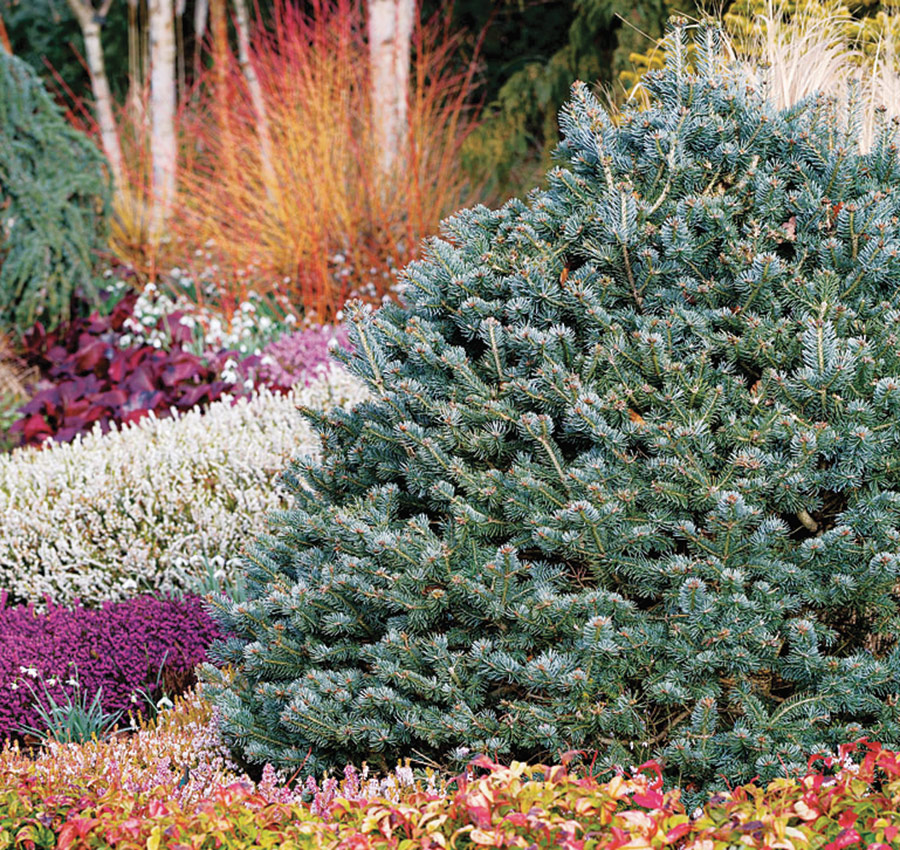
Name: Abies lasiocarpa ‘Glauca Compacta’
Zones: 3–7
Size at 10 years: 36 inches tall and 18 inches wide
Annual growth rate: 6 to 8 inches
Conditions: Full sun; well-drained soil
Native range: Western North America
Over the decades since it was introduced, this cultivar has become iconic. It’s hard not to give its bright blue, near-perfect pyramidal form a second look, whether it is a standalone specimen or part of a mixed planting. Like so many conifers, it only looks better with time. Lime-green new spring growth changes to bright, powdery blue for a truly regal effect. Well-drained soil is best, but this variety will even grow surprisingly well in heavier soil as long as it has good drainage. Although it starts out small, it can grow more than 6 inches per year once established and will reach about 25 feet at maturity. It is super hardy and should never require major pruning.
‘Aurea’ Korean fir offers sunny color and a majestic form
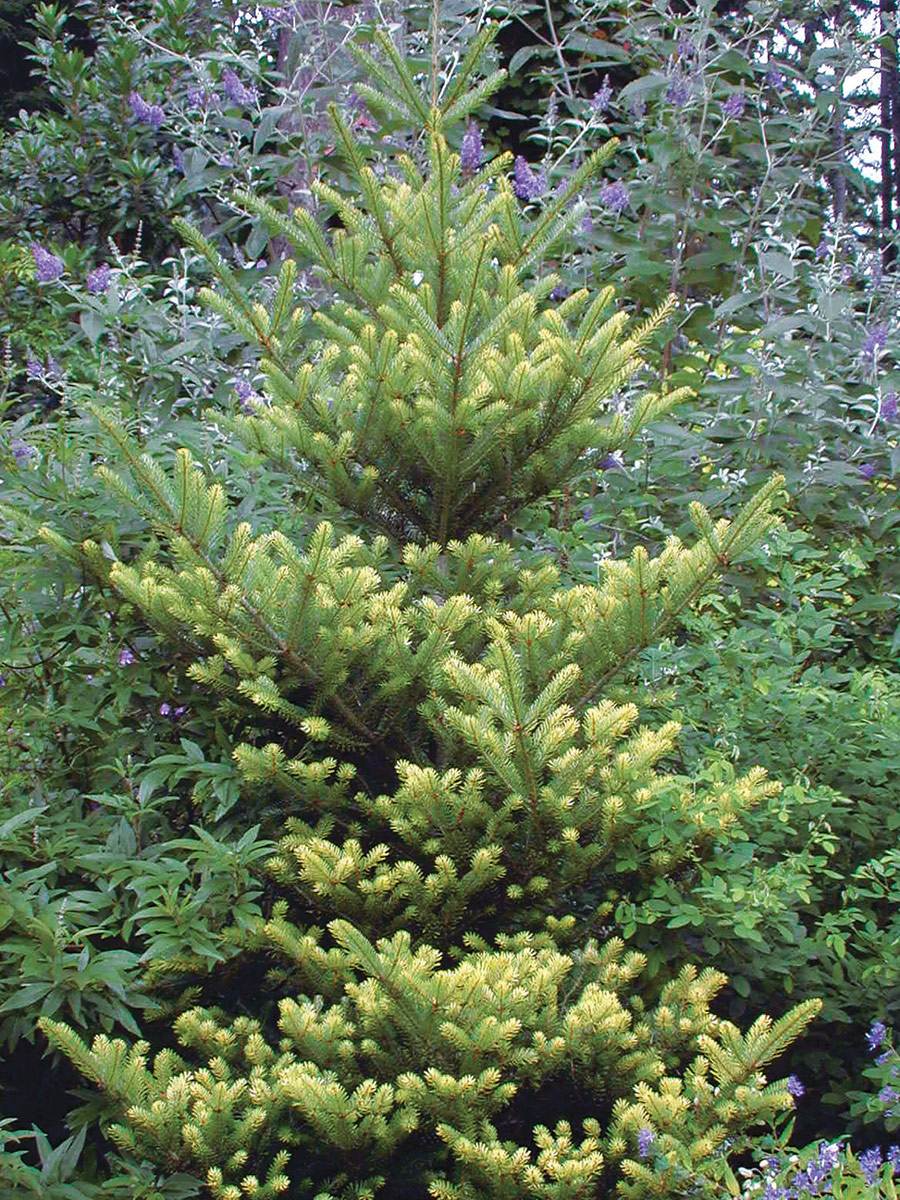
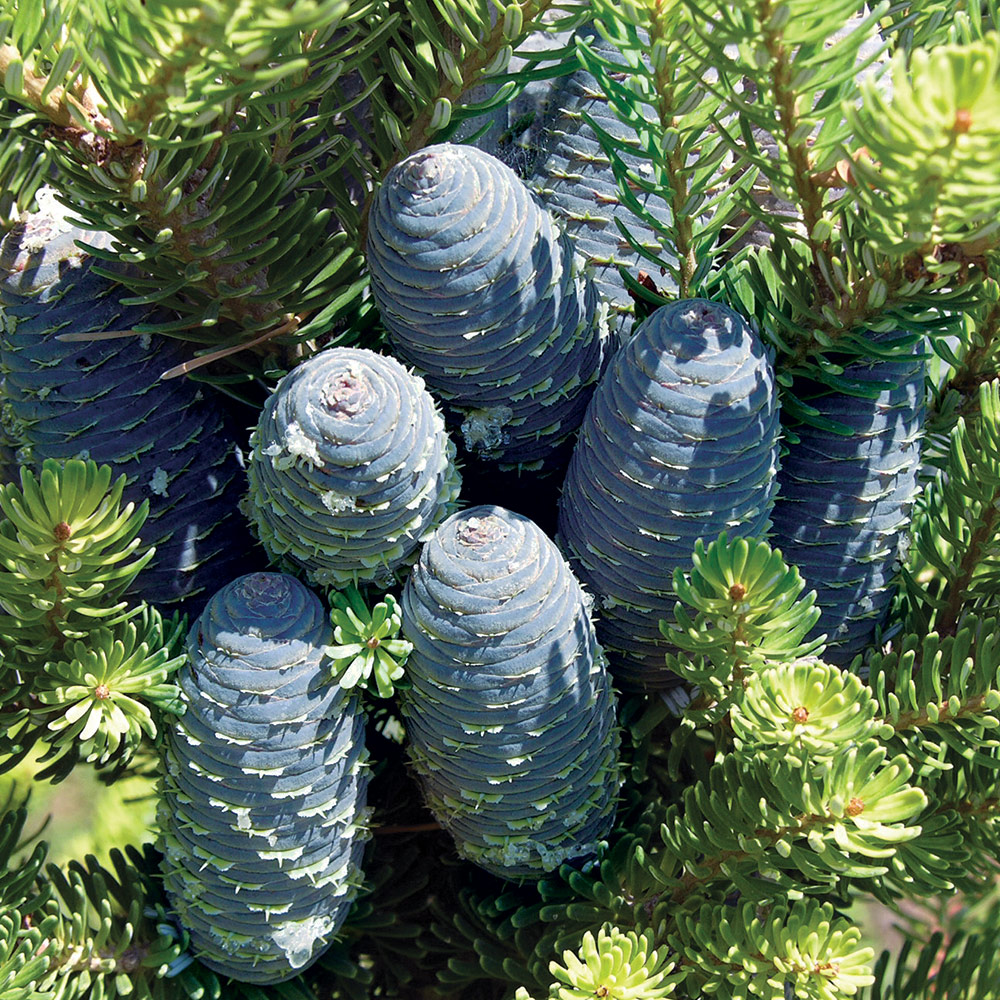
Name: Abies koreana ‘Aurea’
Zones: 5–7
Size at 10 years: 5 feet tall and 2 feet wide
Annual growth rate: 6 inches
Conditions: Full sun to partial shade; well-drained soil
Native range: North and South Korea
This lemon yellow, pyramidal beauty has been described as one of the top 10 landscape conifers and is one of my favorites. Once established, it grows relatively quickly and combines beautifully with other conifers and Japanese maples (Acer palmatum and cvs., Zones 5–9). In spring and summer, the combination of its soft, yellow needles and indigo blue cones is a sight to behold. When allowed to grow to its full potential, this variety does not need any pruning. If there is any drawback to this species, it is that Korean firs prefer sandy to loam soil; avoid planting it in clay soil or in slow-draining areas. This species will also struggle in humid summers in its southern zone range.
‘Gold Drift’ Norway spruce embellishes its flowing form with brilliant new growth
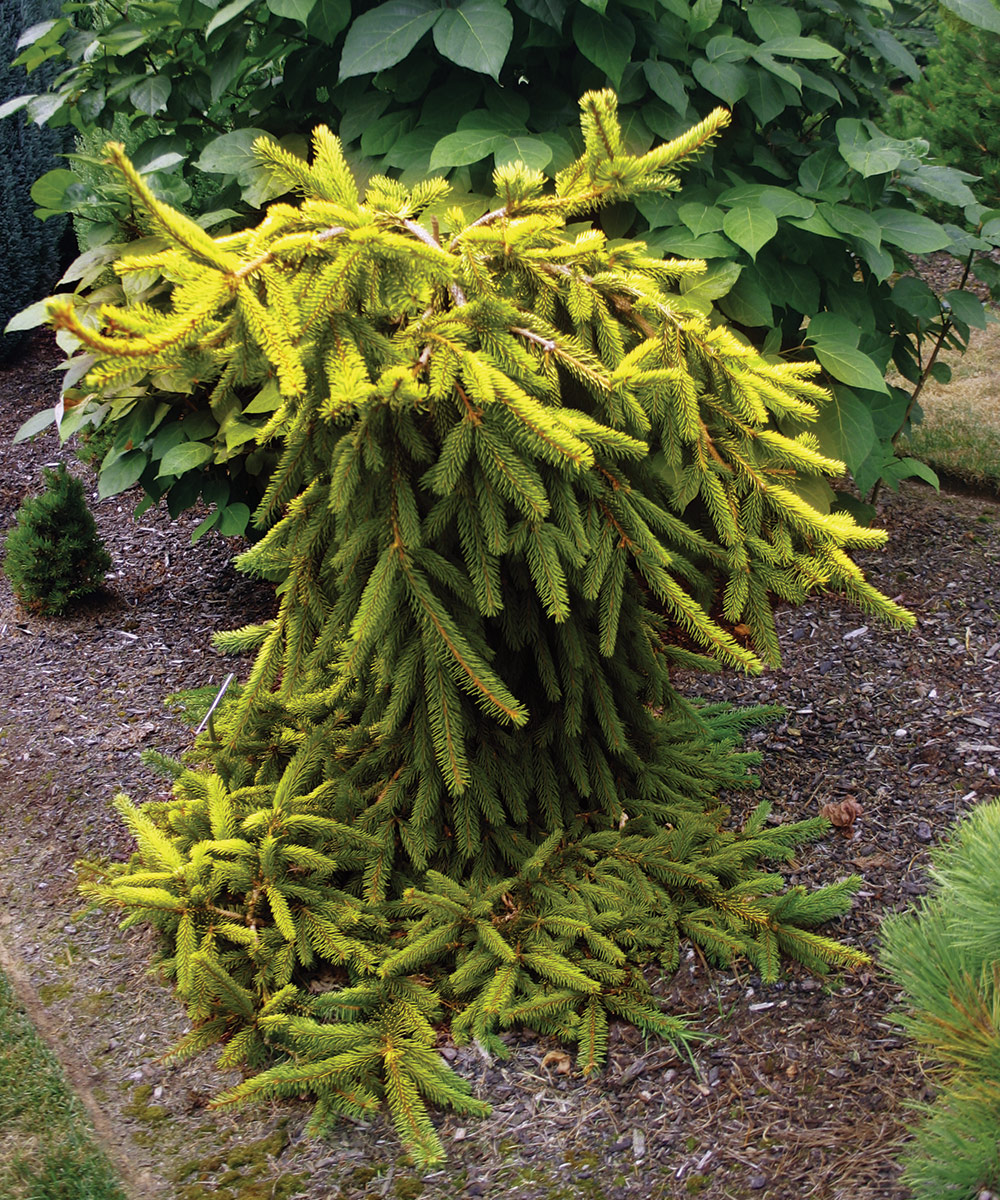
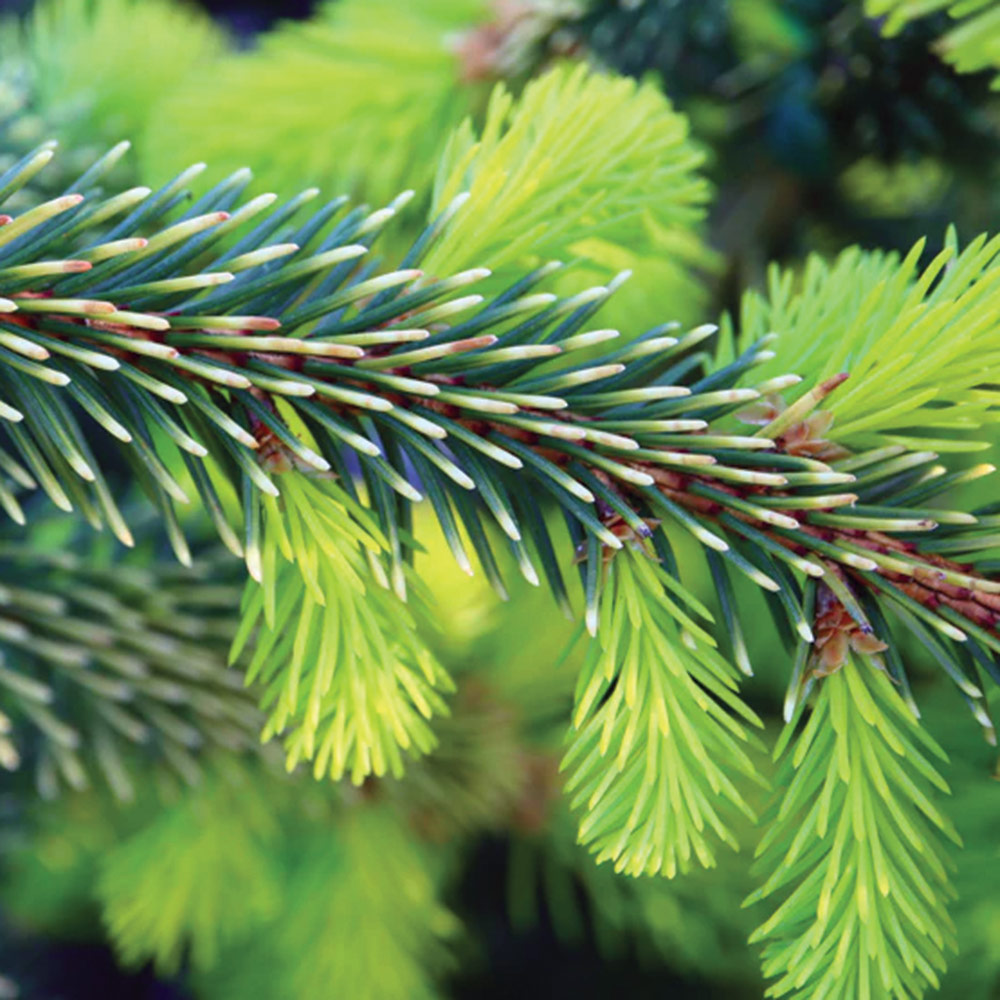
Name: Picea abies ‘Gold Drift’
Zones: 3–8
Size at 10 years: 6 feet tall and 2 feet wide
Annual growth rate: 12 inches
Conditions: Full sun; well-drained soil
Native range: Northern, central, and eastern Europe
Weeping plants in a color other than green are still quite rare for temperate zone gardening, which explains why ‘Gold Drift’ made quite the stir when it was released in the 1990s. Its brilliant new growth contrasts nicely with the green and gold tones on older foliage. Flecks of yellow remain on the otherwise dark green needles, even in winter. Its adaptability for landscape use seems unlimited, as it fits into any type of situation. It must be staked for height while its pendulous side branches tightly hug the trunk. Once the desired height has been achieved, it will gently cascade back to the ground. Leaving the bottom branches to spread out at the base of the tree creates an interesting ground cover effect, but this skirted look may not be for everyone, especially where space is limited. ‘Gold Drift’ has an elegance that belies its toughness and durability. Another option that is now available is ‘Gold Finch’, a smaller dwarf weeping form with even more year-round color.
Set aside some space for ‘Blue Sparkler’ Eastern larch
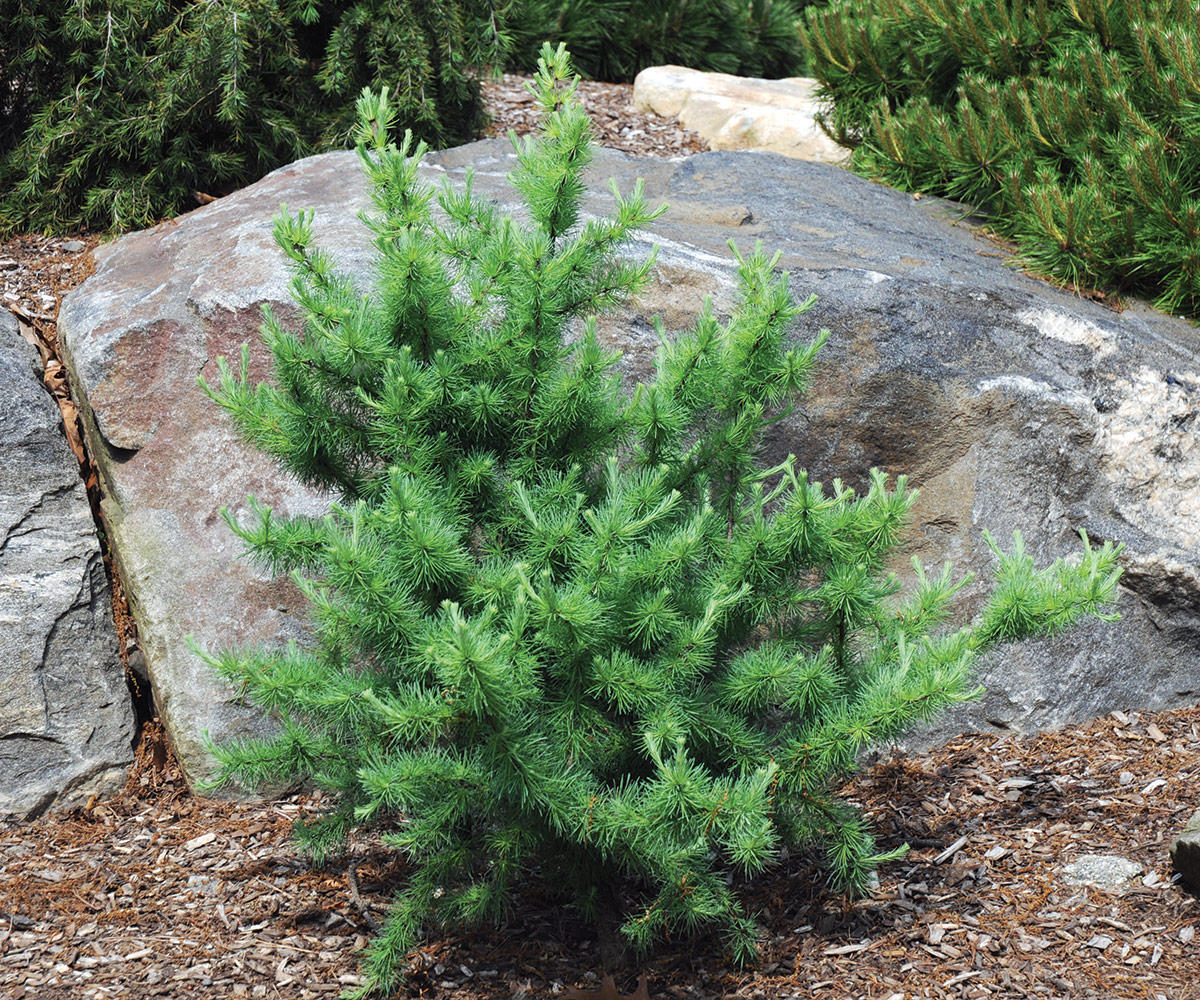
Name: Larix laricina ‘Blue Sparkler’
Zones: 2–6
Size at 10 years: 3 feet tall and wide
Annual growth rate: 8 to 12 inches
Conditions: Full sun; average to wet soil
Native range: Northern North America
Likely the most cold hardy of our colorful candidates, this nativar completely fooled me with its ultimate size. For years its form will remain naturally globose; however, it will eventually form a leader and continue to grow in a perfect pyramidal shape well past 30 feet. Ultimately our specimen had to be cut down, as it was encroaching on much slower-growing varieties around it in the dwarf conifer garden. Eastern larch is adaptable to various soil types and even tolerates wetter soil, making it easy to use in the landscape. Not the dwarf it was once touted to be, careful consideration must be given to placement. However, this deciduous beauty’s bright blue summer color and brilliant, deep yellow fall color do not disappoint. It is quite disease resistant, but Japanese beetles can be a nuisance on young plants. As with all larches, it is relatively shade intolerant and should be planted in full sun.
If you’re looking for a stately specimen, choose ‘Gold Rush’ dawn redwood
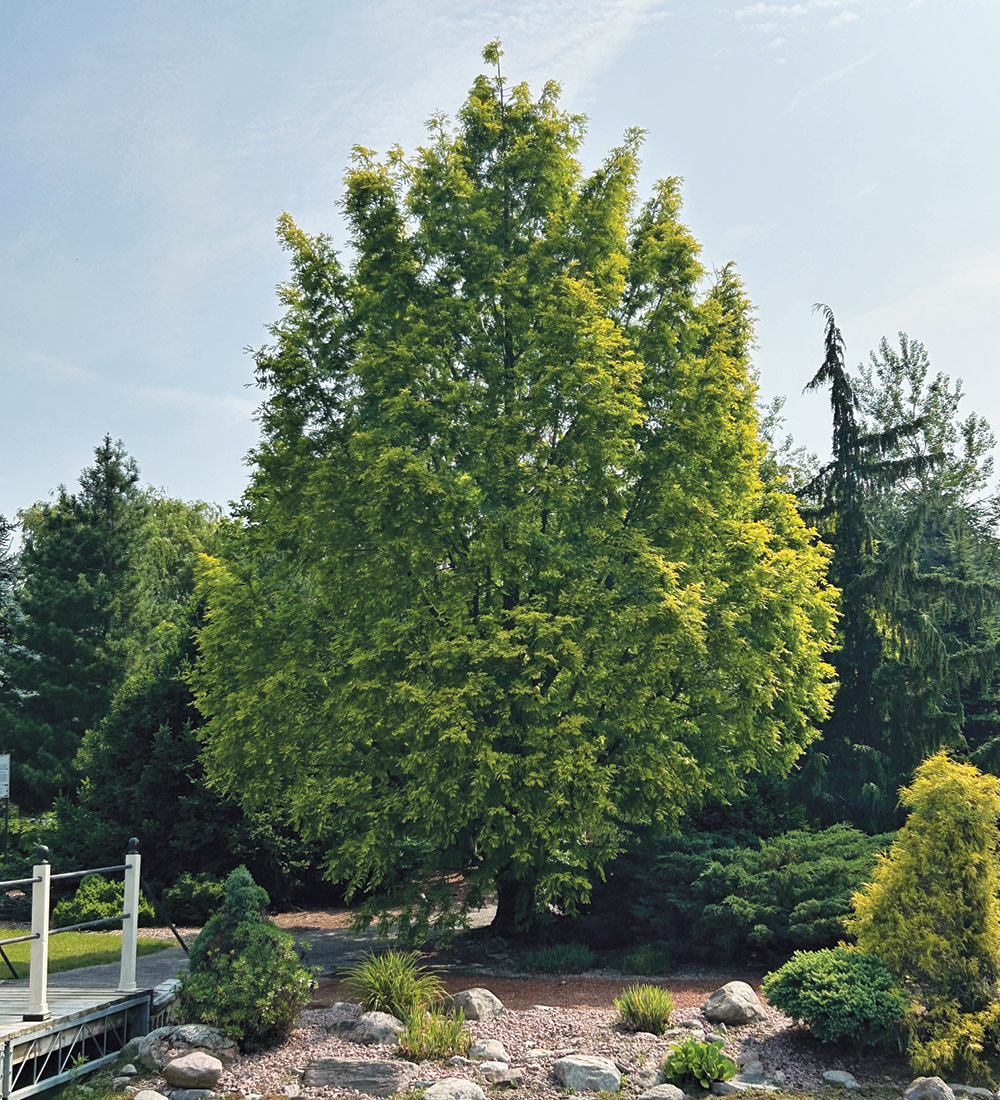
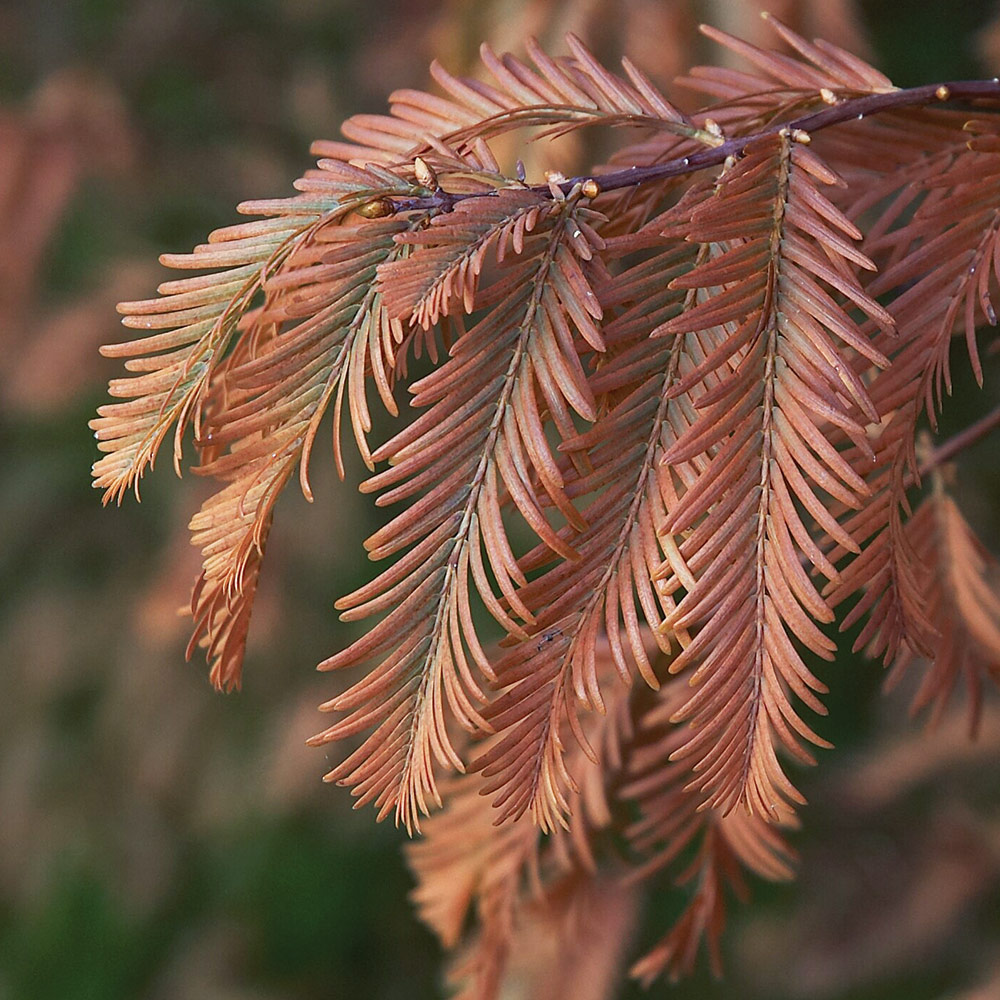
Name: Metasequoia glyptostroboides ‘Gold Rush’ (syn. ‘Ogon’)
Zones: 4b–8
Size at 10 years: 10 feet tall and 3 feet wide
Annual growth rate: 12 inches
Conditions: Full sun to partial shade; well-drained soil
Native range: China
Few plants in the landscape can capture as much attention as a golden dawn redwood. ‘Gold Rush’ is an absolute standout, with a graceful oval shape that is more compact than the species. It also grows somewhat more slowly than the species but over time can reach 50 feet tall or more, so plan accordingly. There is no right or wrong answer when deciding whether the branches should be left growing to ground level or limbed up to a desired height. In fall its deciduous foliage is a mix of copper and orange, a unique addition amid more traditional fall colors. After the foliage drops, the reddish tones in the bark are attractive, as is the flanged trunk shape that often occurs on older trees. No major pests and diseases are associated with this tree.
‘Blue Clovers’ Eastern white pine is a dramatic choice for a larger space
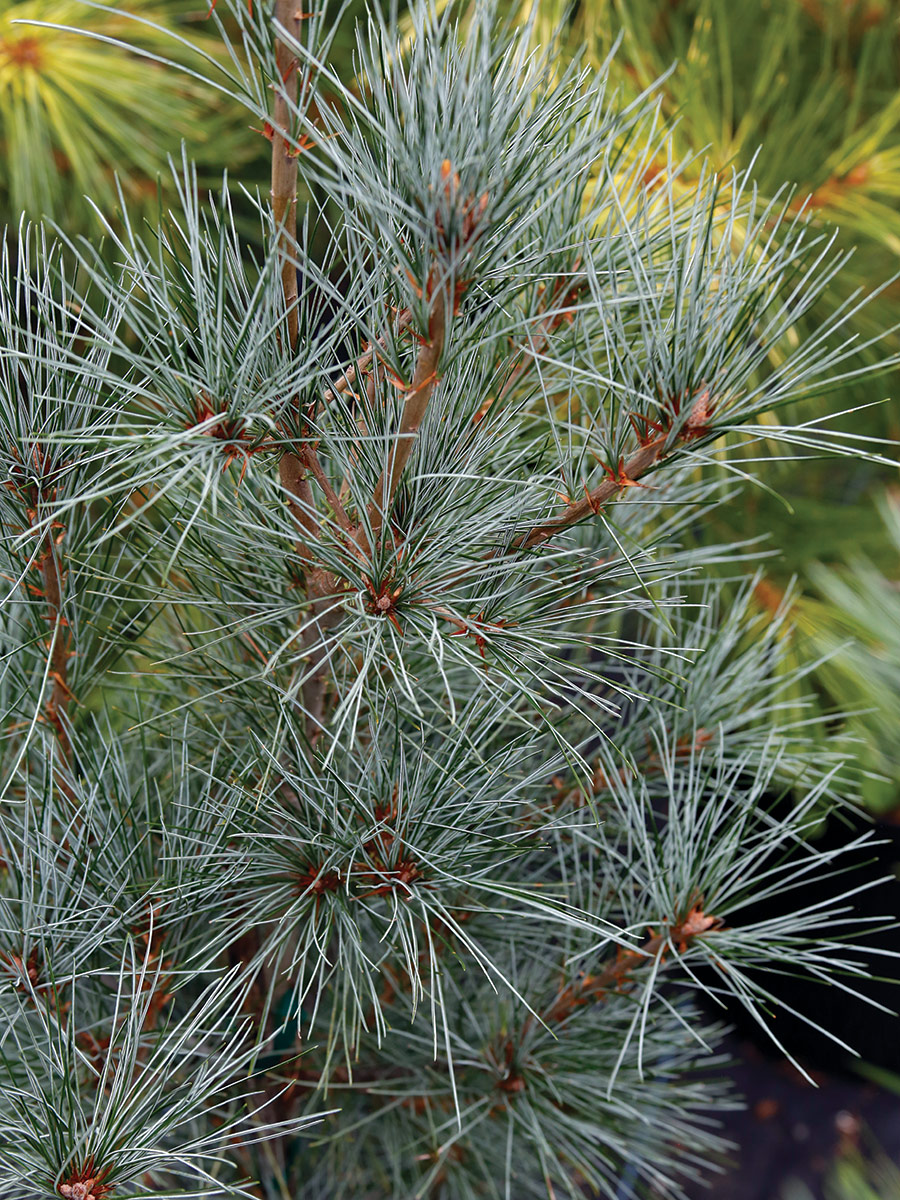
Name: Pinus strobus ‘Blue Clovers’
Zones: 3–8
Size at 10 years: 12 feet tall and 5 feet wide
Annual growth rate: Up to 2 feet
Conditions: Full sun; well-drained soil
Native range: Eastern North America
‘Blue Clovers’ is a more recently introduced nativar with powder blue and silver-toned needles. You may see young plants that have been densely sheared sold in retail settings, but an established tree will put on new growth quickly and is not a good choice for a smaller landscape. It must be sited in full sun with lots of room to reach its full potential. This variety is especially useful in more northern climates, as it offers a large-scale dose of blue color that can be difficult to achieve without using a more traditional Colorado spruce.
How to keep your investment looking good
Conifers are not inexpensive, so it makes sense that we expect them to do some heavy lifting in our garden designs. Fortunately, just a tiny bit of extra effort is all it takes to give them an edge and keep them looking their best.
When planting pines, look out below
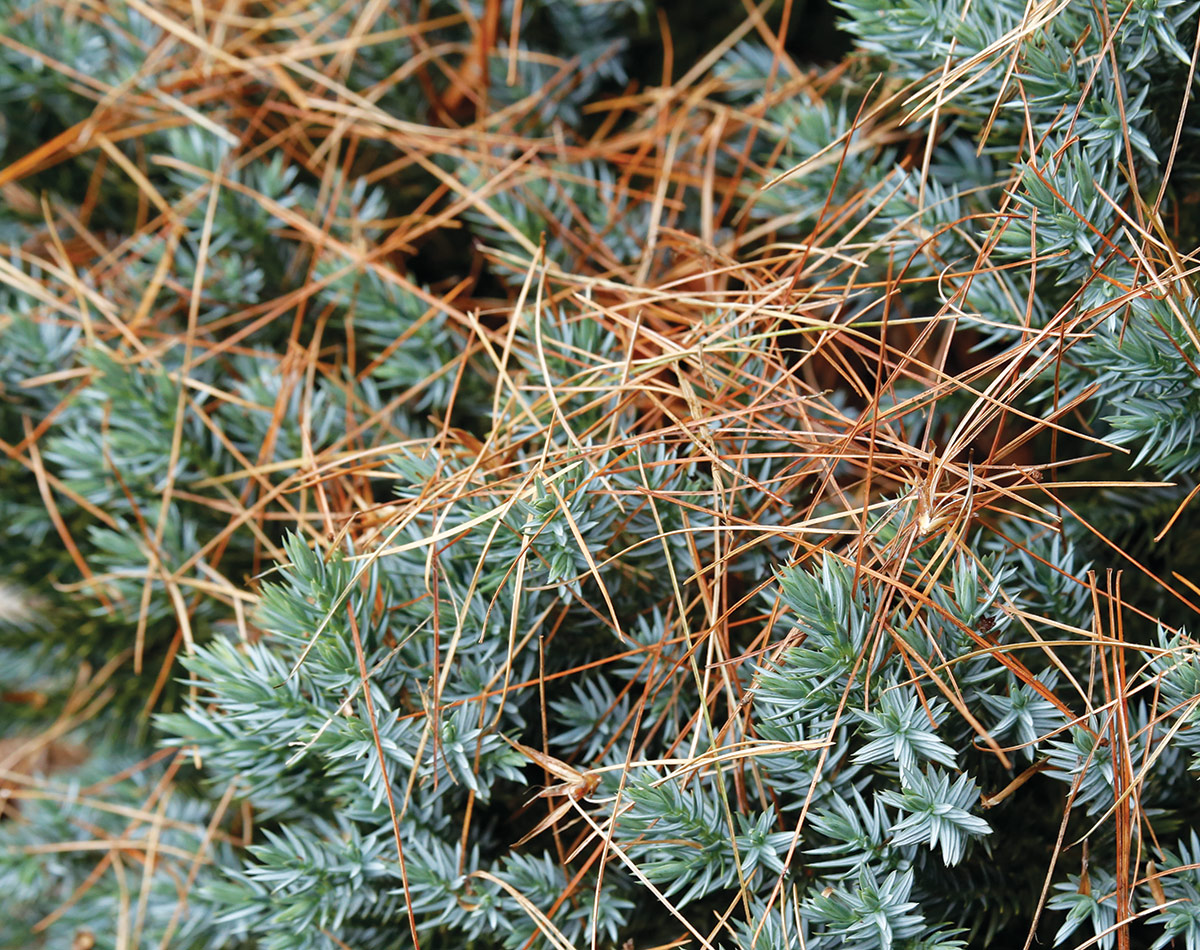
It’s a good idea to avoid planting evergreen spreaders like junipers (Juniperus spp. and cvs., Zones 2–8) under pines. Pine needles tend to get stuck in the foliage of the ground cover, making it more difficult to keep it looking clean. Instead, plant deciduous ground covers that lose their leaves in fall, around the same time that the pines are dropping needles.
Give dwarf pines a hand in fall
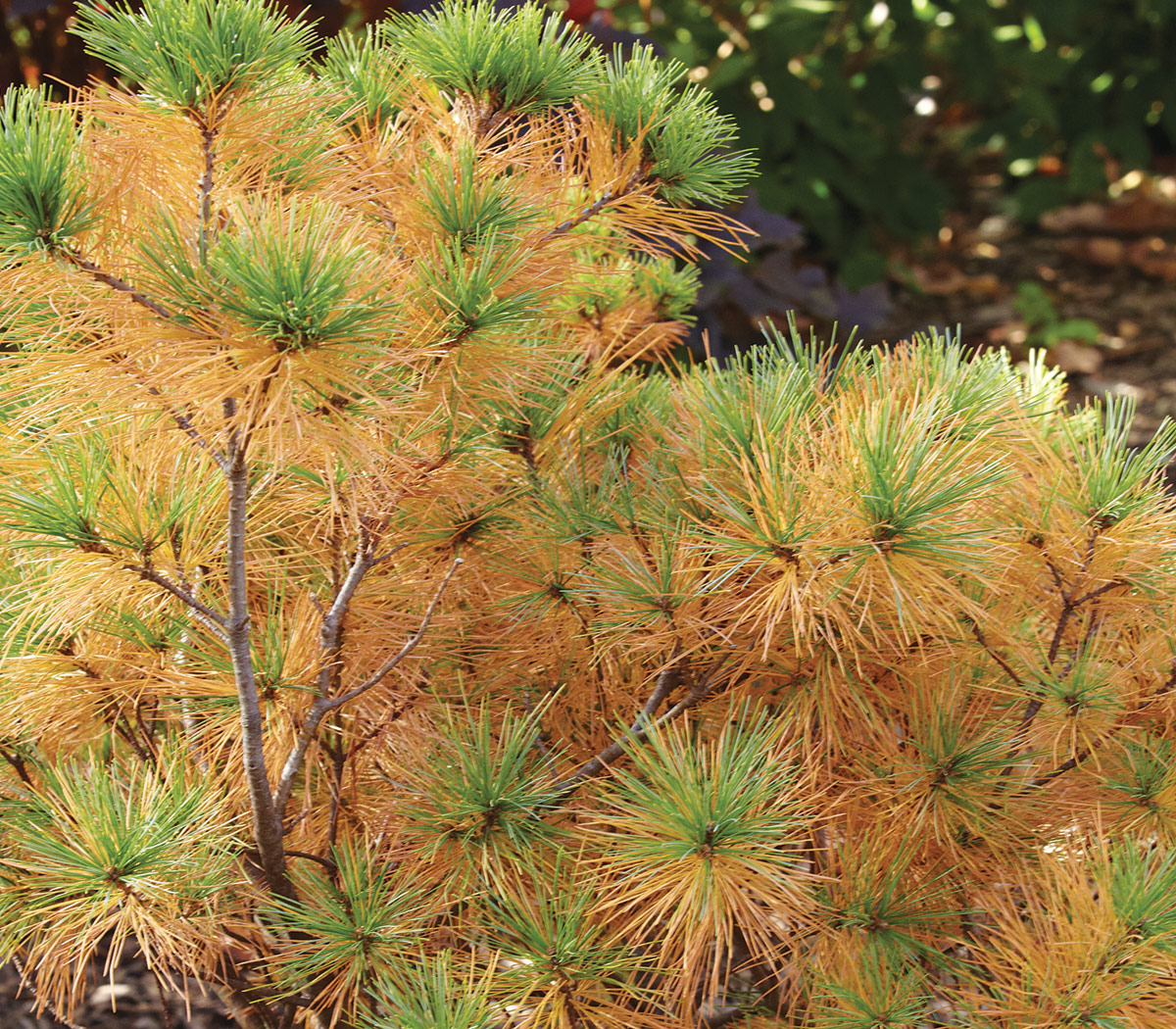
Most pine species only keep their needles for a few years, shedding three-year-old foliage each fall. However, some dwarf and compact pines lose the ability to shed older needles. It is extremely important to clean these out every couple of years to prevent fungal problems and branch die-off. This is best done in autumn to avoid unwanted encounters with wasps’ nests, rodent nests, or the occasional snake.
Skip the fertilizer, and watch the water
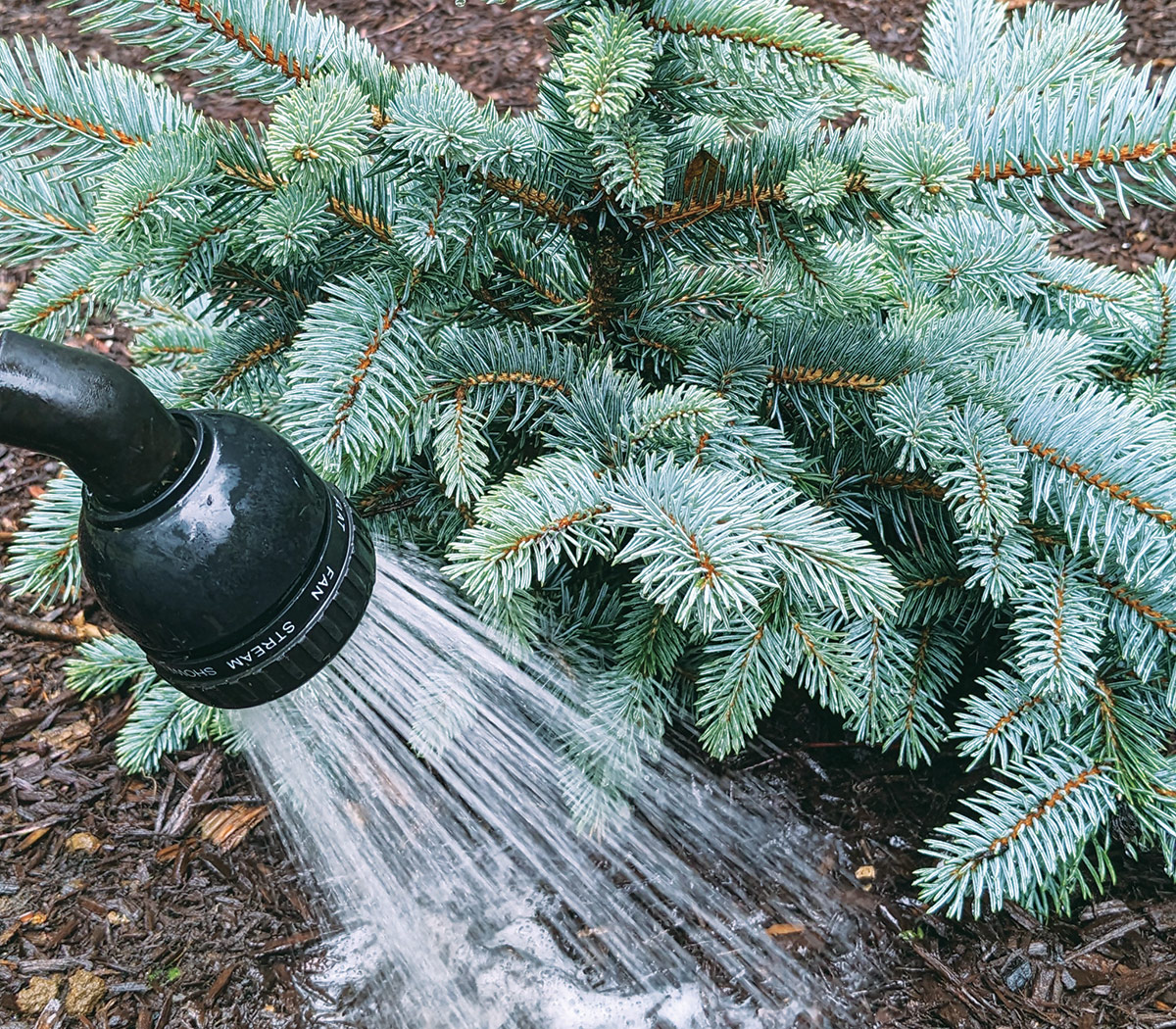
Once established, most conifers grown in the ground do quite nicely without supplemental nutrients. However, regular watering is often helpful during a plant’s first season, in periods of prolonged drought, and for conifers grown in containers. Test your soil at planting time; amendments should be added only if a nutrient deficiency is identified, carefully following the recommendations provided with your soil test results.
Darren Heimbecker is the owner, founder, and designer of Whistling Gardens in Wilsonville, Ontario.
Sources:
The following mail-order sources may offer some of the plants featured in this article:
- Broken Arrow Nursery, Hamden, CT; 203-288-1026; brokenarrownursery.com
- Conifer Kingdom, Silverton, OR; 503-874-4123; coniferkingdom.com
- Mr. Maple, East Flat Rock, NC; 828-226-5684; mrmaple.com
- Wilson Bros Gardens, McDonough, GA; 770-573-1778; wilsonbrosgardens.com
Fine Gardening Recommended Products

ARS Telescoping Long Reach Pruner
Fine Gardening receives a commission for items purchased through links on this site, including Amazon Associates and other affiliate advertising programs.

The Nature of Oaks: The Rich Ecology of Our Most Essential Native Trees
Fine Gardening receives a commission for items purchased through links on this site, including Amazon Associates and other affiliate advertising programs.

DeWalt Variable-Speed Cordless Reciprocating Saw
Fine Gardening receives a commission for items purchased through links on this site, including Amazon Associates and other affiliate advertising programs.
- 18.31 x 6.13 x 4 inches
- 1-1/8-inch stroke length
- Variable speed trigger with 0-3000 spm


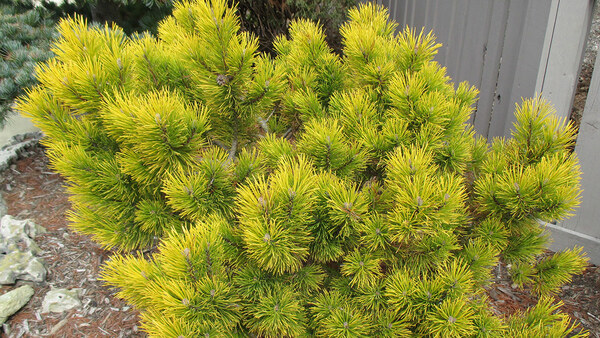
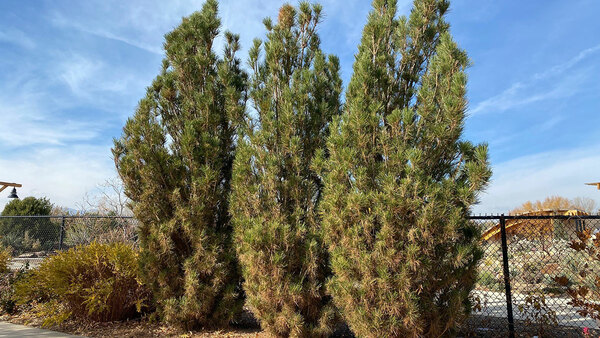
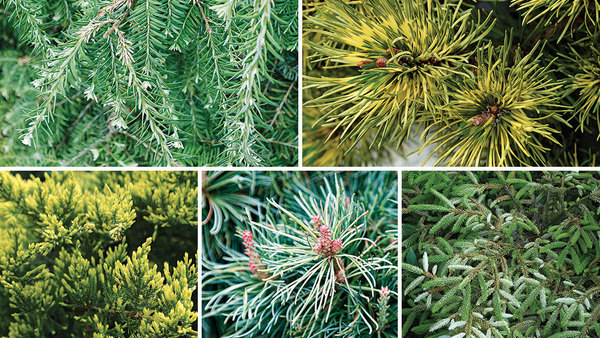













Comments
Log in or create an account to post a comment.
Sign up Log in